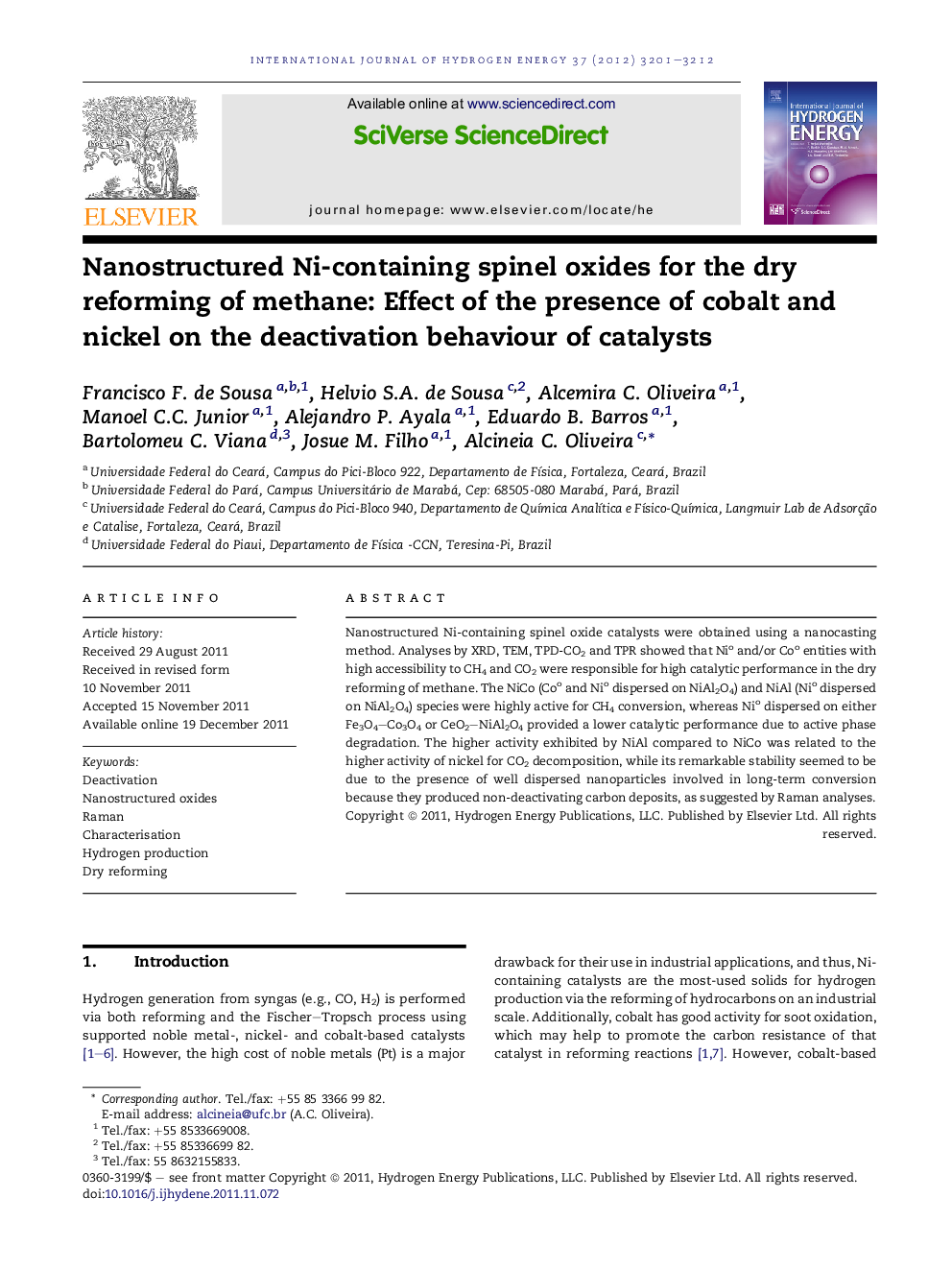| Article ID | Journal | Published Year | Pages | File Type |
|---|---|---|---|---|
| 1282325 | International Journal of Hydrogen Energy | 2012 | 12 Pages |
Nanostructured Ni-containing spinel oxide catalysts were obtained using a nanocasting method. Analyses by XRD, TEM, TPD-CO2 and TPR showed that Nio and/or Coo entities with high accessibility to CH4 and CO2 were responsible for high catalytic performance in the dry reforming of methane. The NiCo (Coo and Nio dispersed on NiAl2O4) and NiAl (Nio dispersed on NiAl2O4) species were highly active for CH4 conversion, whereas Nio dispersed on either Fe3O4–Co3O4 or CeO2–NiAl2O4 provided a lower catalytic performance due to active phase degradation. The higher activity exhibited by NiAl compared to NiCo was related to the higher activity of nickel for CO2 decomposition, while its remarkable stability seemed to be due to the presence of well dispersed nanoparticles involved in long-term conversion because they produced non-deactivating carbon deposits, as suggested by Raman analyses.
Graphical abstractFigure optionsDownload full-size imageDownload as PowerPoint slideHighlights► Nanocasting Ni, Co-containing catalysts were synthesized. ► Characterisation by thermal analysis techniques, XRD, TEM and TPR indicated that Coo and Nio entities with high accessibility to CH4 and CO2. ► Analyses of the spent catalysts by TEM, Raman and TPO demonstrated that coking was the main cause of catalyst deactivation. ► Graphitic and filaments of carbon.
